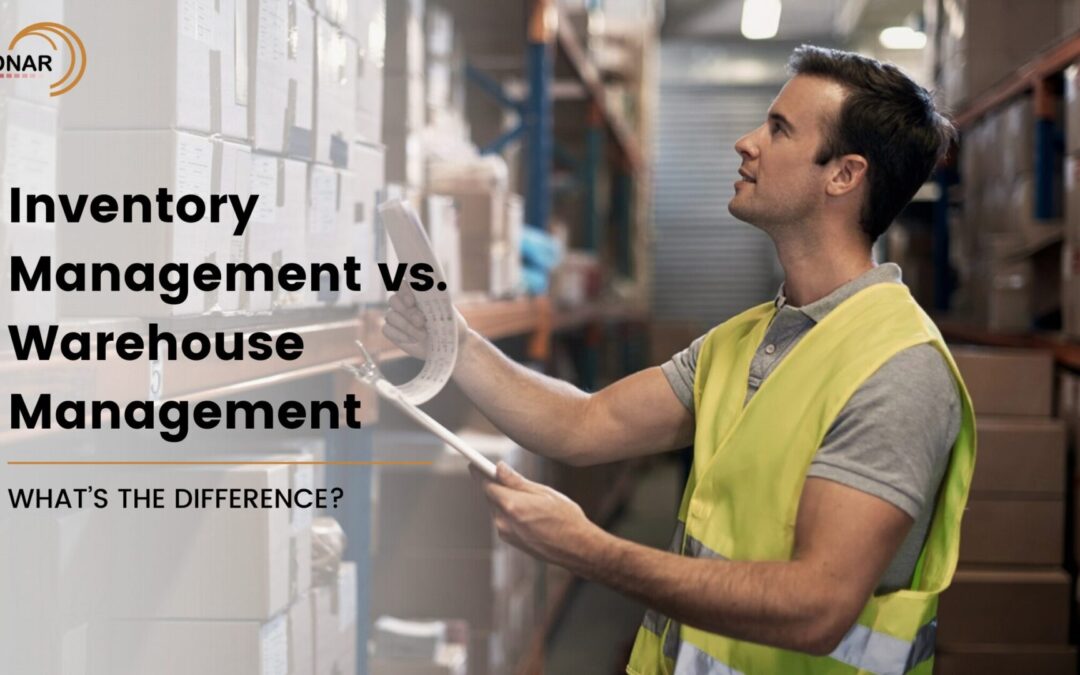Inventory management and warehouse management are both necessary for monitoring and regulating products, although they differ in key ways. While inventory management operates on a much larger scale, warehouse management is limited to maintaining things in a warehouse or storage facility rather than throughout the organisation. In this article, we will explain to you the difference between warehouse and inventory management in a detailed format
Inventory management vs. warehouse management
Inventory Management
Inventory management is the process of tracking and administering inventory at all warehouses, stores/shops, and other company storage locations. It is regarded as the initial step towards establishing warehouse management.
Warehouse Management
Warehouse management is a subset of inventory management that focuses on inventory control inside a warehouse or storage facility.
Inventory Management Systems vs. Warehouse Management Systems (IMS vs. WMS)
The inventory management system, or IMS, keeps track of the stock available in all warehouses and storage facilities, as well as which warehouse holds which products. In contrast, a warehouse management system (WMS) keeps track of goods and their location within a storage facility or warehouse. The difference between warehouse and inventory management systems are used together to improve stock control.
What is an inventory management system?
An inventory management system or software manages supply chains and delivery systems. The programme tracks raw materials, works-in-progress (WIP) commodities in warehouses or storage facilities, and finished goods in stores or shops. An effective inventory management software enables organisations to find high-selling or best-selling products while reducing inventory costs by focusing less on low-selling ones. One of the most significant advantages of investing in inventory management software is the ability to monitor and manage stocks automatically and precisely. The software will create a list of products that need to be restocked or automatically ordered.
What is a Warehouse Management System (WMS)?
A warehouse management system or software handles the day-to-day tracking of warehouse stocks and inventory. The programme makes it easier to acquire, store, audit, monitor, and manage warehouse inventories for order fulfilment. The warehouse management system can be included in an enterprise resource planning (ERP) package or used independently. It also improves the customer experience by notifying businesses of stock-outs ahead of time. Unlike inventory spreadsheets, a warehouse management system delivers precise and efficient inventory tracking and replenishment lists. The software employs configurable barcoding to enter products as “inflows” into the database, together with crucial details, instructions, warnings, and so on.
Comparisons between Inventory Management vs Warehouse Management Systems
- Inventory management and warehouse management both help to move inventory from the supplier to the customer or buyer.
- They are responsible for ordering, storing, delivering, and rearranging goods.
- Both use barcoding and radio frequency identification (RFID) to increase accuracy and efficiency.
- Both give stock information, perhaps within a warehouse or throughout the corporate ecosystem.
Integrating warehouse management and inventory management systems
There are many differences between warehouse and inventory management yet combining warehouse and inventory management systems is always a good idea for increasing efficiency and sales. Integrating the software and systems provides seamless operations, accurate cycle counting, and automated inventory management.
Why should you use Sonar Technologies for inventory and warehouse management?
Sonar Technologie’s warehouse solutions provide clients from diverse fields with access to services for stock maintenance and shipment via a single-window interface, as well as access to company-owned and operated warehouses located strategically.
- Customised industry-specific solutions for SMEs.
- Digitised services for inventory management
- Customised logistical services are offered.
Wrap Up
Understanding the difference between warehouse and inventory management is more than simply educational; it is a strategic need. Whether you’re an experienced warehouse expert or new to the industry, understanding these concepts will help you improve your operational efficiency and overall business performance. So, analyse your warehouse’s specific requirements, compare inventory management vs warehouse management systems, and select the solutions that will help you streamline operations, please customers, and keep your business going forward
Frequently Asked Questions.
How do environmental factors influence the choice between IMS and WMS?
Can IMS and WMS be integrated successfully, and what is the difference between warehouse and inventory management?
IMS and WMS can be seamlessly integrated to build a full inventory and warehouse management solution. Such integration provides more visibility throughout the supply chain, enhanced inventory accuracy, and simplified operations, all of which contribute to better decisions and customer happiness. Obstacles may include guaranteeing system interoperability, maintaining data consistency, and training staff on the integrated system. To overcome these hurdles and reap the full benefits of integration, it is important to collaborate with providers who provide robust integration capabilities and support.
What are the long-term ROI considerations when deciding between IMS and WMS?
When calculating the long-term ROI of Inventory Management vs Warehouse Management, firms should include both the original implementation costs and the potential for operational efficiency, error reduction, customer happiness, and scalability. A WMS may have a greater initial cost, but it can lead to significant savings and efficiency benefits in larger or more complicated processes by improving inventory accuracy, reducing waste, and optimising people. On the other hand, an IMS may be less expensive for smaller organisations, providing necessary inventory management functions without the extra complexity and cost of a full-fledged WMS.
How do IMS and WMS react to technological and industry standard changes?
What are the training and workers implications of utilising a WMS or IMS?
Implementing a new WMS or IMS typically demands a significant investment in training and even reorganising your workforce. Workers may require more intense training to fully utilise the features of a WMS due to its wider scope and complexity. This could include training in specialised gear, software, and new operational procedures. An IMS typically requires less intensive training, with an emphasis on software usage and inventory management fundamentals. Regardless of the system, planning for ongoing training and support is vital to ensuring a smooth transition and maintaining operating efficiency

